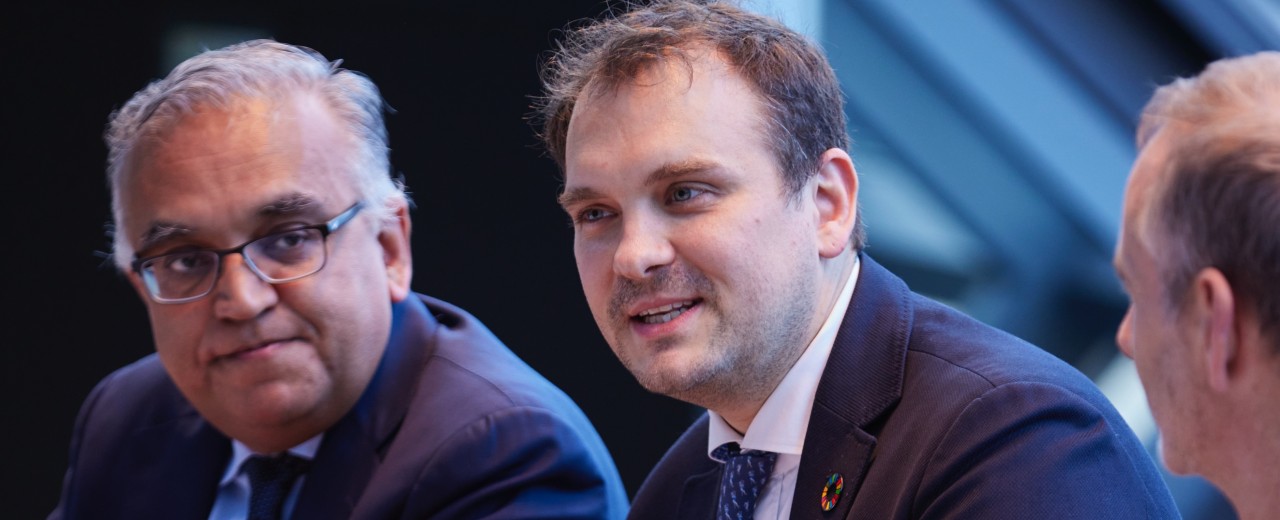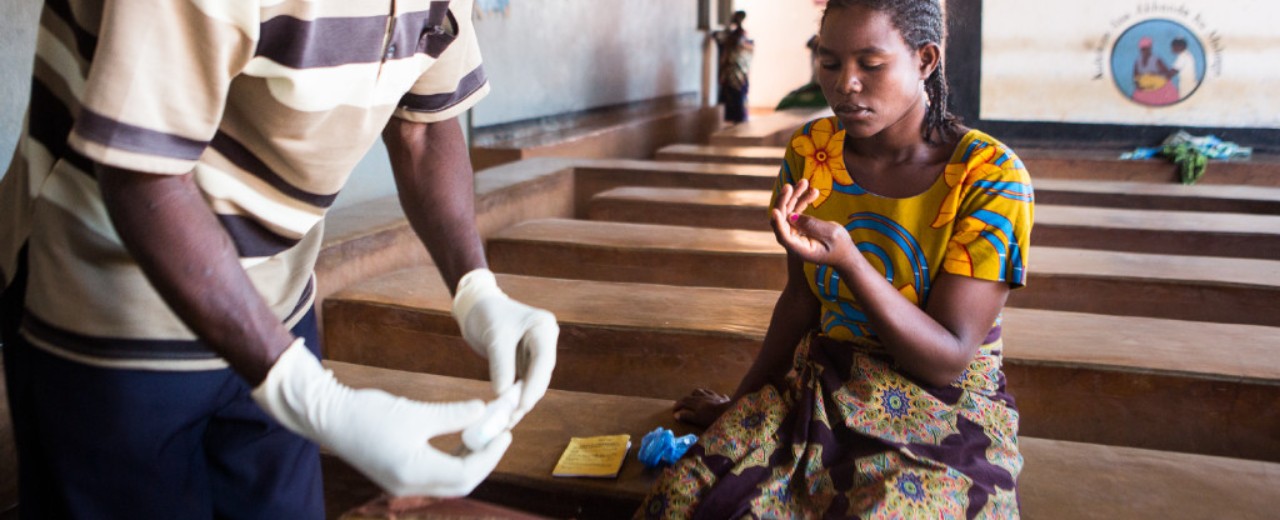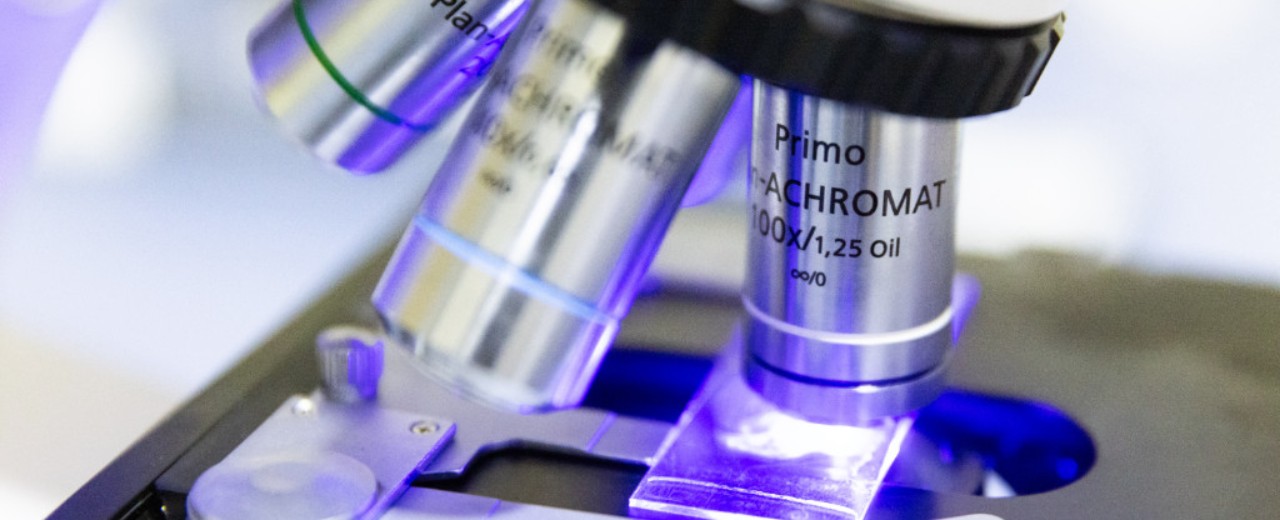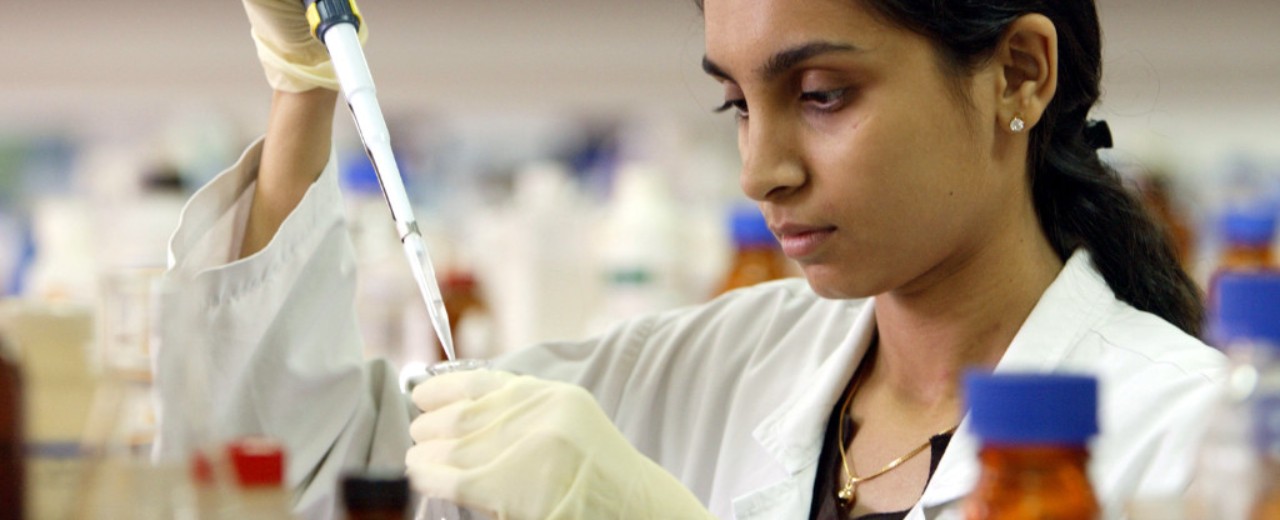Interview mit Markus Beck
Fight against malaria – game changer vaccine?Markus Beck, Senior Donor Manager and Market Shaping Expert at the global Vaccine Alliance Gavi, talks to Tobias Luppe, Health Sector Economist at KfW, about the progress made so far in the fight against malaria and to what extent the recently developed vaccines could become a game changer.
Published April 2024

Despite enormous progress over the past 20 years, malaria is still one of the main causes of death for young children in poorer countries. In Africa alone, the worst-affected continent, around 500,000 infants die from malaria every year, according to the WHO – that's more than 1,000 every day. But pregnant women and people with weak immune systems are also particularly at risk.
Malaria is a brake on development. The disease places a massive burden on healthcare systems, especially in resource-poor African countries. Here, in the weeks following heavy rainfall, the already weak health facilities are often overwhelmed by the number of people suffering from severe malaria. In socio-economic terms, malaria leads to a loss of productivity, reduced school performance in children with long-term cognitive impairment and – of course – extremely high expenditure in the health sector.
In principle, malaria is now expected to spread in areas that were not previously affected by malaria, or not severely affected, such as the Ethiopian highlands. Floods and extreme rainfall could also increase the disease burden, as there would then be more breeding grounds for the vector, the anopheles mosquito.
Yes and no: because in some areas it could even become too warm for the anopheles mosquito. Dengue fever could then become more prevalent there – transmitted by a different type of mosquito. Either way, the health situation will deteriorate, also with regard to malaria. And this is particularly true in countries that have the least resources available. They are dependent on international support. In general, however, we are concerned about the further spread of the disease, e.g. in the Global North. The tiger mosquito has already established itself in Germany, and the latest Lancet Countdown report on global health and climate change predicts that an additional 500 million people will be affected by malaria and other vector-borne diseases such as dengue and chikungunya fever.

Malaria-related deaths among young children have reduced drastically over the past 20 years – in Africa from over 1 million per year to around 500,000 today. The spread of insecticide-treated bed-nets and spraying insecticides for prevention, the introduction of rapid tests for diagnosis without a microscope and the use of a new generation of malaria drugs have been very important in this regard. And, of course, large-scale education campaigns for the most vulnerable population groups.
In addition to long-term bilateral cooperation to strengthen health systems, the Global Fund to Fight AIDS, Tuberculosis and Malaria plays a prominent role. It has been financing the prevention, diagnosis, and treatment of malaria for more than 20 years. Germany is one of its most important donors.
The name says it all: our job is to finance vaccination programs and strengthen health systems. However, despite over 100 years of research, until recently there was no vaccine against malaria. In fact, malaria is the disease for which there have unfortunately been the most failures and discontinuations of vaccine research programs.
The two vaccines now available, known as RTS,S/ AS01 and R21/Matrix-M, are the result of decades of research and development in close international collaboration between, for example, the PATH Malaria Vaccine Initiative, the pharmaceutical company GlaxoSmithKline, Oxford University and the Bill & Melinda Gates Foundation. Gavi supported the studies and pilots in several countries as soon as promising vaccine candidates were identified. The malaria vaccine is now also the world's first vaccine against a parasitic disease in humans.

No, unfortunately the parasite is too resilient for that, almost insidious, if you can put it that way. But even if the vaccination cannot always prevent infection, the spread is massively reduced. And above all, the severe and fatal courses of malaria are decreasing: studies on R21/Matrix-M, for example, show that symptomatic cases of malaria have been reduced by 75 %.
That is true. But with young children, it is precisely the initial infections that are severe and unfortunately often fatal. In this respect, the vaccines certainly have the potential to become real game changers in the fight against malaria.
At least 28 countries in Africa are planning to introduce one of the two WHO-recommended malaria vaccines as part of their national vaccination programs. In 2024 alone, Gavi will support 18 countries not only with the financing of the vaccine, but also with the roll-out, i.e. storage, supply chains, awareness campaigns, training of health workers, etc. Close coordination with other development partners is particularly important here, and we are grateful that countries like Germany have been successfully promoting the strengthening of health systems in many bilateral partner countries for a long time. We can look back on good cooperation experiences with both KfW and GIZ.
In recent years, Gavi has done a lot to expand the number and regional distribution of vaccine producers. At the turn of the millennium, we sourced six vaccines from four producers in industrialized countries. This portfolio has since grown to over 20 suppliers who provide us with over 100 different formulations for 19 antigens. Most of these producers are based in emerging markets. For Gavi, this broader base of manufacturers translates into more competition, lower prices, and improved security of supply.
Africa is well on the way to establishing regional production facilities, and it is quite conceivable that the malaria vaccine could be produced on the African continent in the future. However, vaccine production is very complex, and many African countries do not currently have the necessary infrastructure or technological resources to produce such vaccines on a large scale.

The countries in question need to invest in research and development and strengthen their regulatory frameworks. It is also important to promote partnerships between governments, the private sector, and academic institutions to develop expertise and technology. Such know-how cannot only be acquired academically but must be shared through technology transfer. To this end, we hope that international vaccine producers such as the German BioNTech Group or the Indian Serum Institute will form partnerships to impart such expertise and build capacities locally.
Vaccine production is always expensive at the beginning because the investment costs are very high, and economies of scale only reduce costs as production volumes increase. However, investing in local production is an investment in independence and security. In the long term, this could lead to lower costs and faster availability in times of crisis. It also promotes overall economic development on the continent.
...and that is exactly why we have developed the African Vaccine Market Accelerator (AVMA). It aims to promote and accelerate the market for locally produced vaccines in Africa. Subsidies of up to 1 billion US dollars over the next 10 years are available for future vaccine production on the African continent. Incidentally, Germany was one of the first supporters of the AVMA during the last G7 presidency in 2022.
The AVMA can support manufacturers in Africa in two different ways: The first is through grants to help producers obtain so-called pre-qualification – a seal of quality – from the WHO and get their vaccine into mass production. The second approach takes effect when a manufacturer wins a procurement contract through our main purchaser UNICEF. They then receive a subsidy of up to USD 0.5 per vaccine dose to enable them to offer their product competitively. The selection of promoted vaccines is based on those that are primarily needed in Africa and where the market would benefit from additional manufacturers. Against this background, a malaria vaccine would certainly be an interesting candidate in the long term, as would vaccine candidates against diseases such as cholera, Ebola, measles, and yellow fever. The AVMA will be officially launched on June 20, 2024, and runs for 10 years, so that we manage to have a certain number of African producers who can produce competitively on an international level.
Eradicating malaria is a complex undertaking that goes beyond providing a vaccine. To this end, Gavi is also working closely with the Global Fund. Strengthening health systems is key. This includes the ability to use the vaccine and to correctly diagnose and treat malaria – even in times of crisis. Improving living conditions is another factor: prevention through the use of mosquito nets and the control of stagnant water to reduce mosquito breeding grounds; but also the management of migration and conflicts as well as our approach to climate change. All these factors contribute to reducing exposure to malaria and lowering the disease burden.
Nevertheless, the two vaccines will make a major contribution to the sustainable fight against malaria. And considering the effectiveness of the vaccines, which is more than twice as high as that of mosquito nets and insecticides, we are optimistic. However, due to the current situation and the effects of climate change already mentioned, it will still take some time. What is certain is that we need long-term funding at both national and international level. That is why we are pleased to have Germany as a strong partner at our side – at Gavi and in the bilateral portfolio via KfW and GIZ.
Share page
To share the content of this page with your network, click on one of the icons below.
Note on data protection: When you share content, your personal data is transferred to the selected network.
Data protection
Alternatively, you can also copy the short link: https://www.kfw-entwicklungsbank.de/s/enzBzLPi
Copy link Link copied